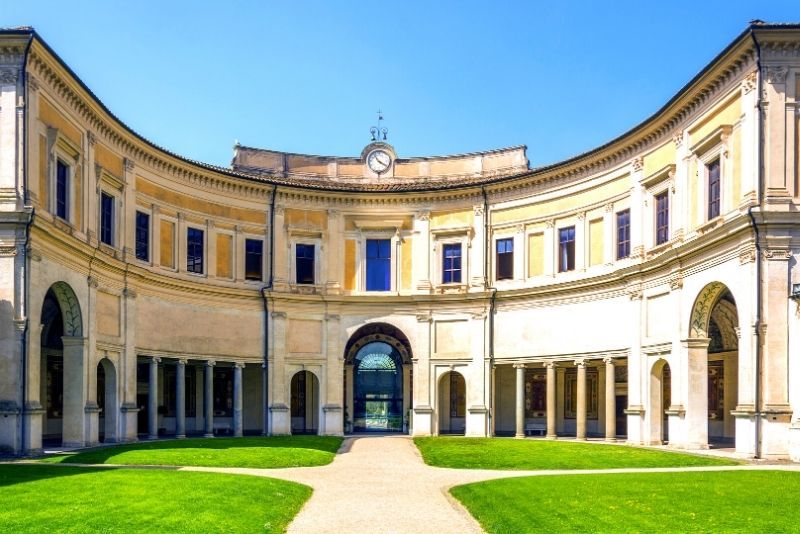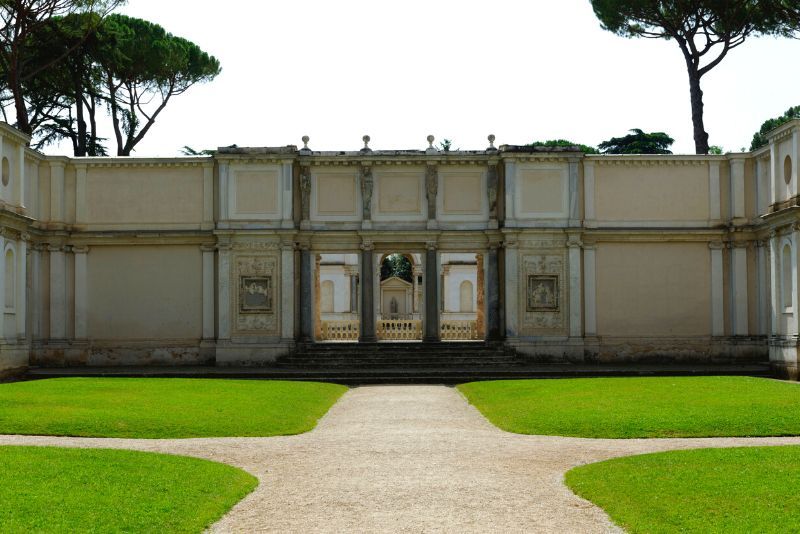Villa Giulia: Tickets and Tours
The lifestyle of the ancient Romans is thoroughly explored throughout Rome, with historic ruins aplenty and museums housing assorted relics to better understand the civilization.
The ancient Etruscans, on the other hand, receive less interest. The Etruscan era dates as far back as the eighth century B.C. and there are plenty of reminders of this period on display in Rome.
The lifestyle of the ancient Romans is thoroughly explored throughout Rome, with historic ruins aplenty and museums housing assorted relics to better understand the civilization.
The ancient Etruscans, on the other hand, receive less interest. The Etruscan era dates as far back as the eighth century B.C. and there are plenty of reminders of this period on display in Rome.

(0/24) checking Musement...
The lifestyle of the ancient Romans is thoroughly explored throughout Rome, with historic ruins aplenty and museums housing assorted relics to better understand the civilization.
The ancient Etruscans, on the other hand, receive less interest. The Etruscan era dates as far back as the eighth century B.C. and there are plenty of reminders of this period on display in Rome.
One of the best ways of discovering this ancient society is by purchasing Villa Giulia tickets and visiting the National Etruscan Museum within.

Here's everything you need to know about Villa Giulia, one of the most spectacular museums in Rome.
How much do Villa Giulia tickets cost?
The Villa Giulia entrance fee is affordable and offers reduced rates for some citizens. Those who are more interested in the villa itself than the Etruscan Museum can buy a ticket that only includes a visit to the building for a lower price.
- Full price: €10
- Villa only: €4
- Reduced rate: €2
- Children (4 and under): Free
There is a €1 fee for booking Villa Giulia tickets online in advance.
Who is eligible for discounts?
Those who are between 18 and 25 years old, and are citizens of the EU can benefit from the reduced rate of €2 on Villa Giulia tickets.
Persons with disabilities and an accompanying caregiver can enter the museum for free.
What are the best Villa Giulia tours?
Skip-the-line guided tour of the National Etruscan Museum of Villa Giulia
This 2.5-hour tour of Villa Giulia explores the ancient Etruscan civilization that predates the ancient Romans. You'll have priority access to the museum and won't have to spend your time queueing.
When you arrive, you'll meet your private guide who will transport you back thousands of years and explain the history behind the relics. This all takes place in the historic former papal residence of Villa Giulia.
Is it possible to visit Villa Giulia for free?
The Villa Giulia entrance fee is waived on the first Sunday of the month for everyone. On this day, the Oro Castellani room is closed, so consider this before you plan your visit.
Should you book in advance?
Booking your Villa Giulia tickets online before your visit guarantees you access to the museum on the day of your choice. There is also the opportunity to purchase skip-the-line tickets as the site can experience long queues.
What will you see inside?
Rome is home to a wealth of historical artifacts and architectural wonders, but one of its lesser-known treasures is the National Etruscan Museum. Founded in 1889, the museum houses an extensive collection of Etruscan artifacts, ranging from pottery and jewelry to tombstones and statues.
The museum's origins can be traced back to 1876 when a group of Italian archaeologists began excavating an Etruscan burial site near Rome. In the years that followed, they uncovered a wealth of artwork and relics, many of which were put on display in Rome's Capitoline Museum.
However, it soon became clear that the Capitoline Museum was simply too small to accommodate the growing collection. As a result, plans were drawn up for a new museum dedicated to the Etruscans. The museum has grown in size substantially and is now partially held at the Villa Poniatowski.
The museum's galleries are arranged chronologically, tracing the development of the Etruscan civilization from the eighth century B.C. to its decline in the first century. Highlights include the "Sarcophagus of the Spouses" — a sixth-century B.C. funerary statue that depicts two lovers embracing.
On a Villa Giulia tour, you can also see the "Head of Leucotea" which once adorned an Etruscan temple in the fourth century B.C.

Another fascinating relic is the Pyrgi Tablets which are a set of bilingual texts inscribed on several gold tablets. This single discovery allowed historians to gain a better understanding of the Etruscan language. The tablets are over 2,500 years old and are perfectly preserved.
There is also a life-sized reproduction of a traditional Etruscan temple which would have dated back to the third or fourth century B.C.
Today, the museum is one of Rome's most popular tourist destinations for those who want to explore the history of Italy beyond the ancient Romans.
The museum is situated inside Villa Giulia which is a former papal residence that was commissioned by Pope Julius III in the 16th century.
While the Etruscan Museum is the main draw of the villa, the building itself features grand Renaissance architecture which was partially designed by Michelangelo.
The spacious gardens once featured vineyards, as well as ornate sculptures.
How to get to Villa Giulia?
The former papal residence is located in the northern part of the city and is easily accessible by tram or metro.
If you choose to travel by tram, you can take the number 2, 3 or 19 to the metro A Flaminio stop. From there, it's a 14-minute journey by foot to the villa.
Metro Line A will also take you to the Flaminio station where you can depart and walk to the museum.
When is the best time to visit Villa Giulia?
The National Etruscan Museum is open to the public from 9 AM to 8 PM every day during the summer months. However, the Ori Castellani room opens at 10 AM. Consider waiting until all rooms are open before visiting the museum to have the best experience.
It's worth noting that between November and March, opening hours are reduced at the villa, and Villa Giulia is closed every Monday throughout the year.
Most people who visit the city are interested in the ancient Romans. Once you've learned all there is to know about the civilization through its ancient ruins including Appian Way, explore the history of the ancient Etruscans.
What are the other museums in Rome?
- Borghese Gallery
- Gladiator School Museum
- Leonardo da Vinci Museum
- Capitoline Museum
- Leonardo Da Vinci Experience
- Vatican Museums
- The Sistine Chapel
Travel tips
- Groups of 10 and over must contact the museum before visiting, to confirm their arrival.
- The last entrance to the museum is an hour before closing time. Bear this in mind when planning your Rome itinerary.
- If you're an EU citizen between the ages of 18 and 25, carry a form of ID with you to benefit from reduced Villa Giulia tickets.

